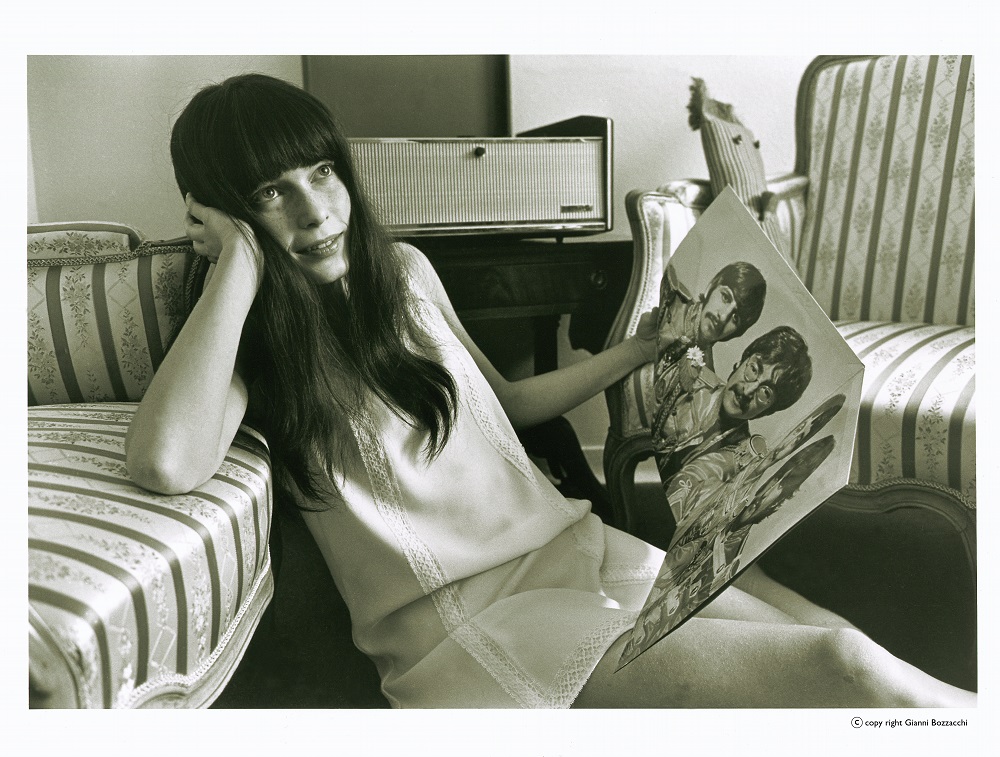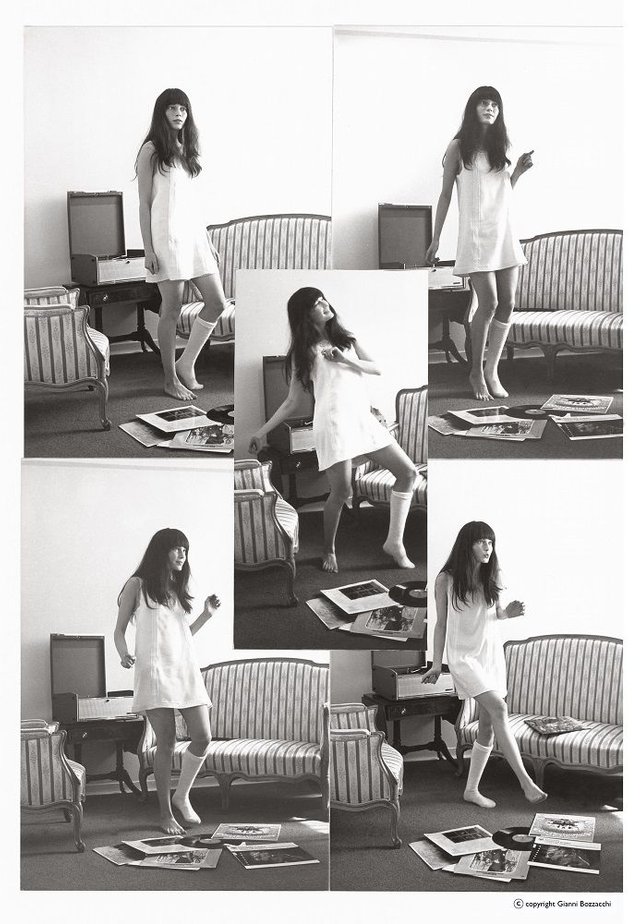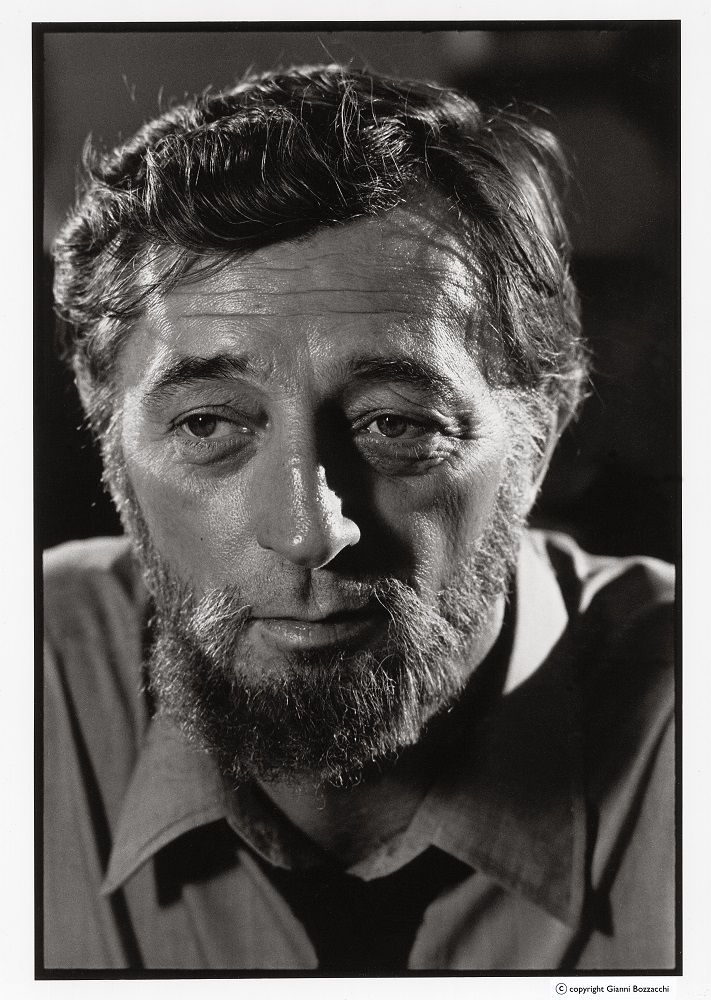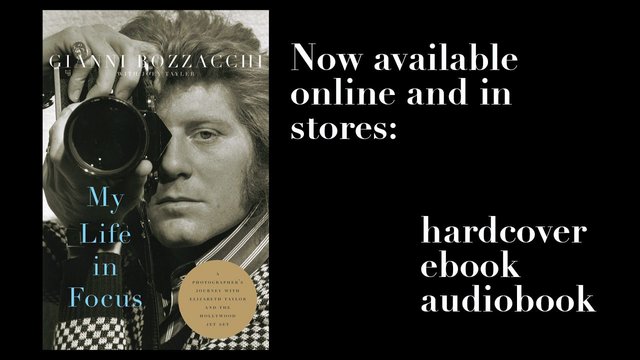["My Life in Focus"] V. Two Movies, One Photographer
The following is an excerpt from Gianni Bozzacchi's autobiography, "My Life in Focus: A Photographer's Journey with Elizabeth Taylor and the Hollywood Jet Set," which I co-wrote.
An Introduction to the Life and Work of Gianni Bozzachi
V. Two Movies, One Photographer
“Where Eagles Dare” was filmed in Wolfern, northern Austria. Every morning, for a month and a half, we toiled up a steep mountain road to the set, located in a castle an hour by car from Salzberg. It was so cold that my cameras froze and my lenses fogged over. I wore two overcoats and tried to protect my cameras by slipping them between the two layers. But it didn’t help much. Licking the lenses was the only way to effectively defrost them. And wearing gloves made correcting the focus a clumsy operation. There were no automatic functions in those days. You had to constantly fuss with all the various mechanisms to adjust the levels.
The members of the cast and crew were almost all English. To keep warm, they drank – cognac in their coffee, gin, whatever. But I didn’t drink. So I froze. One morning I woke in my hotel room, put one foot out of bed and fell to the floor. I was stunned. I took my temperature and the thermometer almost exploded. I withdrew from the battlefront for a couple of days before returning to that icy mountain.
The weather in Austria was very unstable. One day we were forced to evacuate the set when it was swept by a blizzard. Half of us were taken out by helicopter. The others drove down to the valley by jeep. So much snow fell, that the following day our location was unrecognizable.
There was one scene where two actors came down by parachute, and the one with the radio had to fall and die. Hutton then wanted Richard to walk out over the virgin snow and retrieve the radio. Richard took two steps and vanished, swallowed up by the snow. No one had noticed that there was a huge ditch right in front of him, because Hutton had forbidden anyone to walk over the snow. Everyone rushed to pull him out. It was a very funny moment. But Richard flew into a rage with both the director and cameraman, the pair of them doubled up laughing.
From Austria, the production of “Where Eagles Dare” moved to England, where filming was completed at the MGM studios in Elstree. Elizabeth had already signed to act in another Joseph Losey movie, “Secret Ceremony,” which they were shooting across the street in another part of the Elstree Studios. As a result, at some point I found myself photographing the sets of both movies. This was Elizabeth and Richard, remember. You’ve got to work. And now I had to work as well! I ended up so busy doing “Secret Ceremony” and “Where Eagles Dare” that I barely got a moment to enjoy London. A car would take us to the studios in the morning, before it was even light. And by the time we finished, it was already dark. On a few occasions we went out for a nightcap. But mostly we went straight to bed, hoping to grab as much sleep as possible before that car came to get us again in the morning.
On the first day of shooting “Secret Ceremony,” I arrived at the set around 7:30 in the morning and was walking down a corridor when Mia Farrow stepped from her dressing room. She had a bottle of Italian wine in her hand, a Verdicchio. “Can you open this for me?” she asked, waving the bottle in the air. Her marriage to Frank Sinatra had just ended. We’d all heard the story of how he’d served her divorce papers right in the middle of shooting “Rosemary’s Baby,” apparently furious that, as his wife, she’d dared to go back to work. So, while I opened the Verdicchio, I couldn’t help asking her why they’d separated. “Because I like the Beatles,” she replied. I took a photo of her posing with “Sgt. Pepper’s Lonely Hearts Club Band,” which she then put on a turntable and began dancing to, right there in the dressing room.

(Mia Farrow had just left Frank Sinatra when she invited me for an impromptu 7:30 a.m. drink in her dressing room on the London set of “Secret Ceremony," 1968. Copyright Gianni Bozzacchi.)
I enjoyed a good rapport with Mia. She was like a child, sweet and innocent. I never felt out of place with her. She never criticized others and never made a big thing about her celebrity.

(Copyright Gianni Bozzacchi.)
Some photos I took of Mia were very sad. I don’t know if it was due to Sinatra or not. Mia was strange, but I liked her. She was sweet and kind, though also enigmatic. You couldn’t have a real conversation with her. She’d keep jumping from one thing to another. I never really understood her personality. Maybe it was because she was so young. Or maybe because I was so young. Or maybe I just couldn’t separate her from “Rosemary’s Baby.” I hated that movie, its darkness, its abstract quality. I’d come to cinema through Neorealism and American epics. It was strange to think of this actress together with Frank Sinatra, and I’d actually seen them together in Los Angeles.
Another star in “Secret Ceremony” was Robert Mitchum. He came and went as he pleased, without getting close to anyone. The attitude fitted with the image he wanted to give of himself – tough, distant, cynical, like a lot of his characters. But after I’d spent some time with him, I actually found him very friendly. I’d chat with him in my stumbling English, and he’d tell me dirty jokes in his equally stumbling Italian.

(Robert Mitchum, 1968. Copyright Gianni Bozzacchi.)
Mitchum never liked to pose, which was just perfect for me. He had a very interesting face. Light sculpted it. He didn’t have conventional good looks – like Richard. His features were more consumed than defined, and he had a shrewd air, which didn’t inspire trust. Photographing him made me understand more clearly the difference between having a woman as a subject and a man. The exposure can be the same, but the stop has to be different. With the right light, you can smooth a woman’s face without having to resort to artificial retouching (or a computer, as they do today). With a man, on the other hand, you have to close down the stop in order to highlight the features of his face.
In Mitchum’s case, that meant highlighting all the marvelous crevices in his face, the furrows of a survivor, his gangster’s grimace. Mitchum appreciated my photos. He said he was never conscious of my presence, never noticed if I was on set, and he liked that. A lot of photographers only worry about pleasing their subjects. I concentrated on the overall context of a photo, on its artistic quality.
I surprised everyone with my work on “Secret Ceremony,” including myself. For the first time, I got huge compliments from the producer, the actors, everyone. It was the movie that made me feel I’d grown as a photographer. And the fact that so many important people had appreciated my work instilled a great sense of confidence in me. Around then, an interview with me appeared in the London Daily Mirror under the headline, “The new king of the camera.”
Come back on Friday for Part VI, in which Richard Burton throws a $1 million diamond into the ocean. Maybe.
